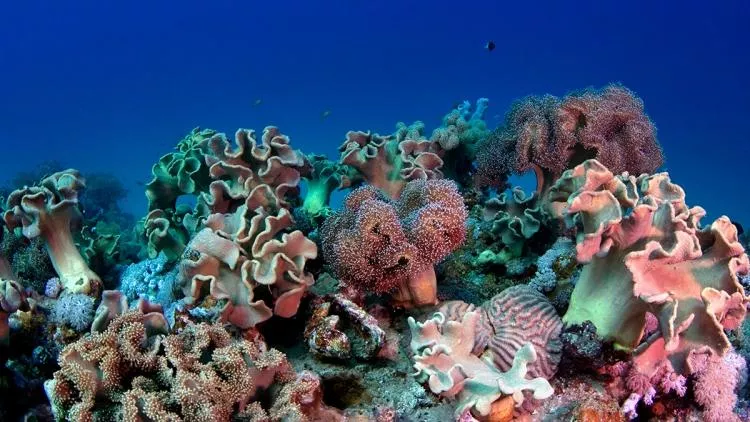How corals are surviving climate change
A third of the world's coral population has already been destroyed. The data gathered from a two-year expedition have yielded findings about what makes some corals more resilient to climate change.
For more than two years, researchers on board the French expedition ship Tara sailed through the Pacific, stopping at almost 100 coral reefs to take thousands of water and coral samples. The expedition ended in 2018, and the analysis of the massive amount of data collected has taken five years.
Now, the initial results of the data analysis have been published. The findings should help us to better understand the living conditions of corals, to check their health status and to open up new possibilities for nature conservation.
Enormous coral die-off feared
According to a report by the Intergovernmental Panel on Climate Change (IPCC), more than half of the world's coral stocks are currently classified as endangered. Without protective measures, 99 percent of corals may perish by the end of the century, fears marine biologist Christian Voolstra from the University of Konstanz.
Voolstra had sailed on the Tara for 80 days and observed the increasing bleaching of the coral reefs. More than 5,000 coral species are currently known worldwide. Each species has adapted individually to its habitat and not all species suffer equally from climate change.
To better protect the coral reefs in the future, the researchers on the expedition carried out the most extensive inventory to date.
Different adaptability
They discovered that one indicator of coral longevity and stress resistance is the length of their telomeres. Telomeres are the ends of the chromosomes that protect the genetic material.
According to the results, corals that modify their telomere length based on the water temperature are more short-lived and more sensitive to stress. On the other hand, long-lived and stress-resistant corals seem to have a mechanism to maintain the length of the telomeres. Hence, telomere length could be used to measure coral health and biodiversity in a reef in order to weigh up reef restoration measures.

Schooner Tara. Image credit: Yohann.cordelle - Wiki Commons - CC BY 3.0
Bacterial diversity in the reef greatly underestimated
The diversity of species in the coral reefs also affects the sensitivity of corals to environmental changes. The first results of the expedition are surprising: the variety of bacteria in the reefs is even higher than previously thought.
According to Voolstra, bacteria are relatively easy to study and hence are a good indicator of a coral reef's health. For example, the type and number of bacteria present in the reef can be used to monitor the influence of climate change on the corals in order to act quickly in the event of deterioration.
However, not all corals react in the same way to external influences. For example, some can develop genetically through exchange with bacteria. Such corals could potentially adapt to climate change more quickly, said Voolstra.
Stress resistance, thanks to double genes
In some corals, another survival advantage was found in the genome: the researchers discovered certain genes that were mainly related to the immune system and disease resistance twice there. They assume that such corals may be more resilient. This could explain, for example, why shallow-water corals live for thousands of years even though they are exposed to ultraviolet radiation all year round. A person would have developed skin cancer with such n amount of radiation exposure, according to Voolstra.
Conclusions
The Tara expedition's extensive research shows that many corals are already sensitive to small changes in temperature. But more has also been learned about the mechanisms that make certain coral species more resilient.
In an interview with the German radio channel SWR (Südwest Rundfunk), Voolstra therefore suspects that, despite rising temperatures, there will always be coral reefs that can survive and that need to be protected. Such resistant corals could then serve as a reservoir from which coral reefs could possibly grow again at a later date.
Fact file
Why are temperature changes so dangerous for corals?
A good indicator of the health of coral reefs is their color: Healthy reefs are colored by the native biodiversity - especially by small algae that live in symbiosis with the corals. In doing so, they release vital nutrients to the corals. The increase in water temperature due to climate change changes the metabolism of the algae: Instead of oxygen and sugar, they emit harmful oxygen radicals. To protect themselves, the corals repel the algae and bleach as a result. If the temperatures stay high for a long time, the corals will starve.




























